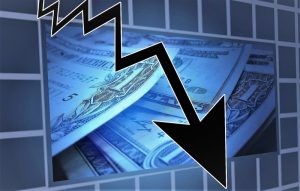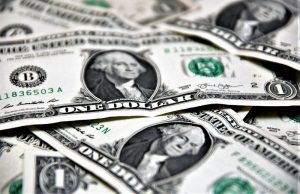Stagflation
Stagflation is the stagnation in a country's economic growth, with a high level of unemployment and high inflation. It is a situation that usually does not occur because usually, inflation does not occur in times of economic weakness, when consumer demand falls preventing prices from rising. It is an economic phenomenon in which unemployment increases along with rising inflation which causes demand to remain stagnant for a certain period of time. In fact, it is a strong indicator that shows an inefficient market, since, traditionally, there is an inverse relationship between unemployment rates and inflationary pressures.
Characteristics of stagflation
The main characteristics of stagflation are as follows:
- It is a scenario that produces increases in the prices of products, an increase in unemployment and a strong economic stagnation.
- It can lead an entire country to impoverishment.
- It produces a distortion in the markets.
- It occurs simultaneously in production sector growth.
- It is accompanied by a process of devaluation and activities in which foreign exchange is consumed.
- Economic growth is very slow, and unemployment is very high.
- The economy does not succeed in growing, but prices do increase.
History
After the supposed triumph of the Keynesian Theories that emerged after the Great Depression, it was accepted that the economy of a country could be affected by two major problems: on the one hand, recession, represented by negative growth rates and a high rate of unemployment, and on the other hand, inflation, which referred to the unlimited increase in prices, which meant the real impoverishment of social groups and the difficulty in allocating resources to companies.
These problems were considered as incompatible because they could not coexist within the correct economic model. And the solutions to inflation were higher interest rates and greater fiscal pressure and/or reduced public spending. In the case of the recession it was the opposite.
After the second half of the 1960s, a new phenomenon affecting the economy was discovered. This phenomenon had low growth rates and strong inflation. McLeod, Minister of Economy of United Kingdom called it stagflation and Milton Friedman was one of the few economists who warned that the classic solutions were doomed to failure.
Causes of stagflation
Stagflation is considered to be a phenomenon that occurs mainly in countries with mixed economies in which institutional mechanisms such as employment subsidies, minimum wages and labor market segmentation occur, causing a negative economic reaction.
According to economists, one possible factor is serious disruption in the supply chain. For example, if the cost of crude oil rises to unprecedented levels, it could also raise the price of oil by-products, making them unprofitable.
The different monetary policies of a nation can also result in stagflation. Once an economy is affected by stagflation, methods to overcome the situation also aggravate the problem since steps to reduce inflation could reduce productivity.
Consequences
Some of the effects that stagflation can produce are unemployment, the rise in prices of all goods, which is coupled with a very slow recovery process. Stagflation can also generate volatility and lack of confidence in the markets, leading to more reactive actions by central banks, such as changes in interest and exchange rates. It produces a distortion in the market and governments and banks are placed in loss-making positions. Decision-making becomes very complex, both in terms of developing them and in the right moment to apply them.
Advantages of stagflation
When stagflation occurs in a country, a tax system should be applied that is an incentive for companies, mainly for those that employ many people and that in one way or another, provide contracts to other smaller entities. A significant reduction in the tax burden on entrepreneurs should be applied, as small and medium enterprises are key in all capitalist countries. On the other hand, companies and establishments are given free rein.
Disadvantages
Among the disadvantages that arise with stagflation we can mention that there is a growth in unemployment and in the economy, businesses suffer stagnation due to the high inflation they suffer. There are less profits in the companies and therefore the general economy of the country is affected negatively.
Examples
In Argentina stagflation is around 15%, which indicates a high rate of economic problems. The Central Bank of the country states that the country is already in a state of recession and very affected by the crisis, the economy and companies have been affected in their production of goods, so they have had to adjust their activities.
In Brazil, stagflation has produced significant increases in the prices of products making the country increasingly enter into crisis. There is high inflation, growing unemployment and demand is paralyzed so the government has had to apply cuts in subsidies and tax benefits to stop the political indebtedness.
How to cite this article?
Briceño V., Gabriela. (2019). Stagflation. Recovered on 23 February, 2024, de Euston96: https://www.euston96.com/en/stagflation/










